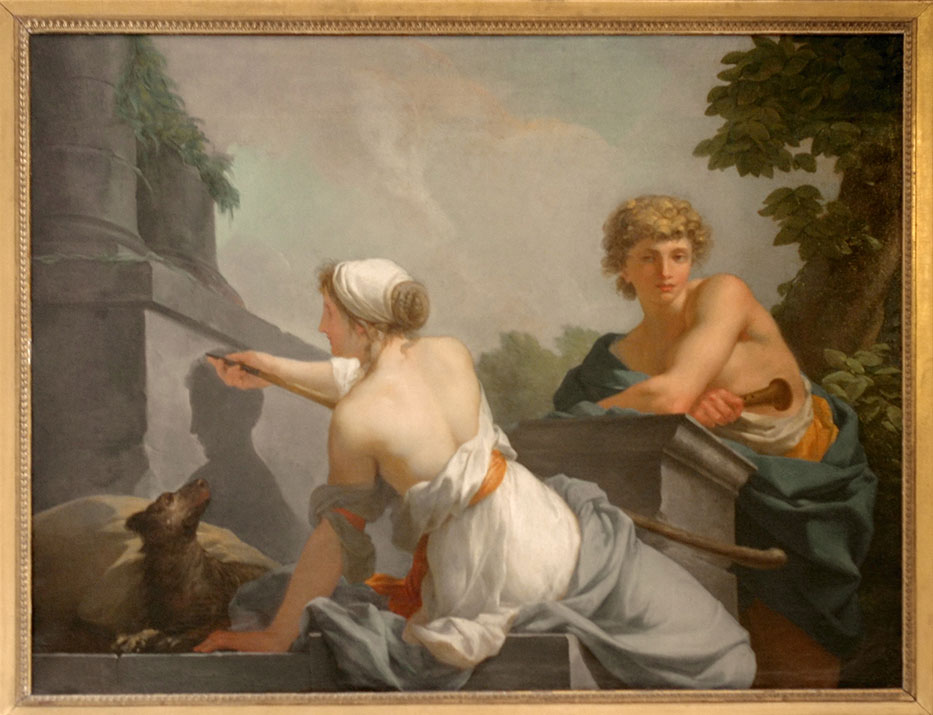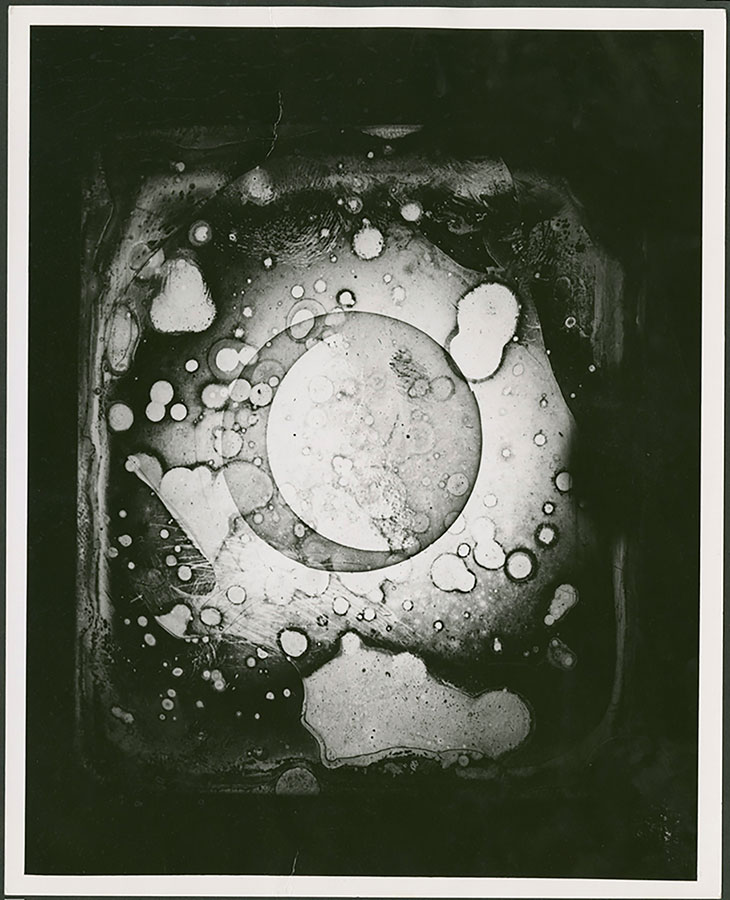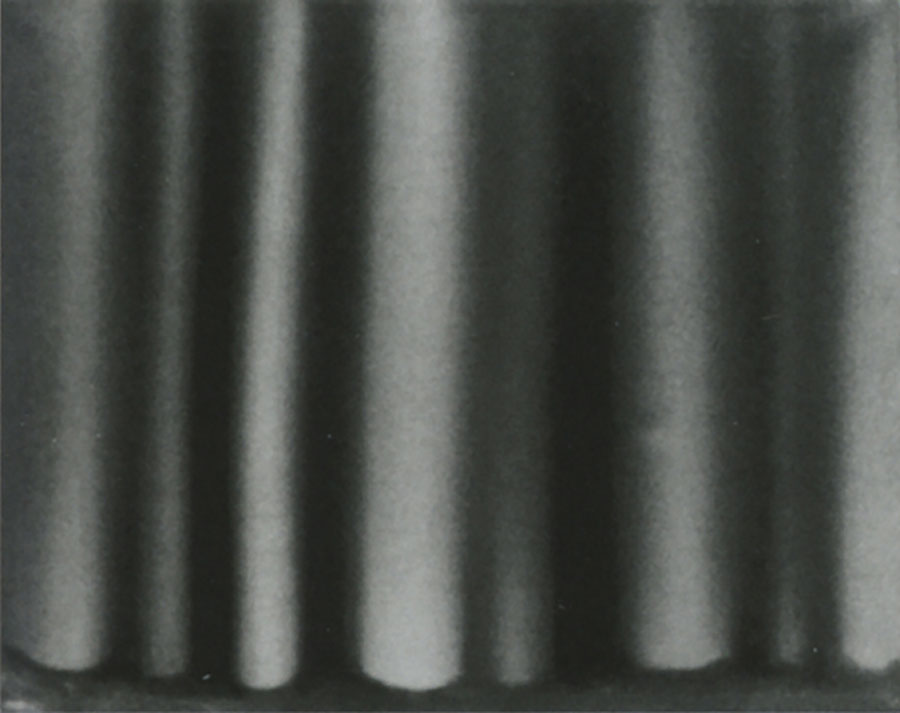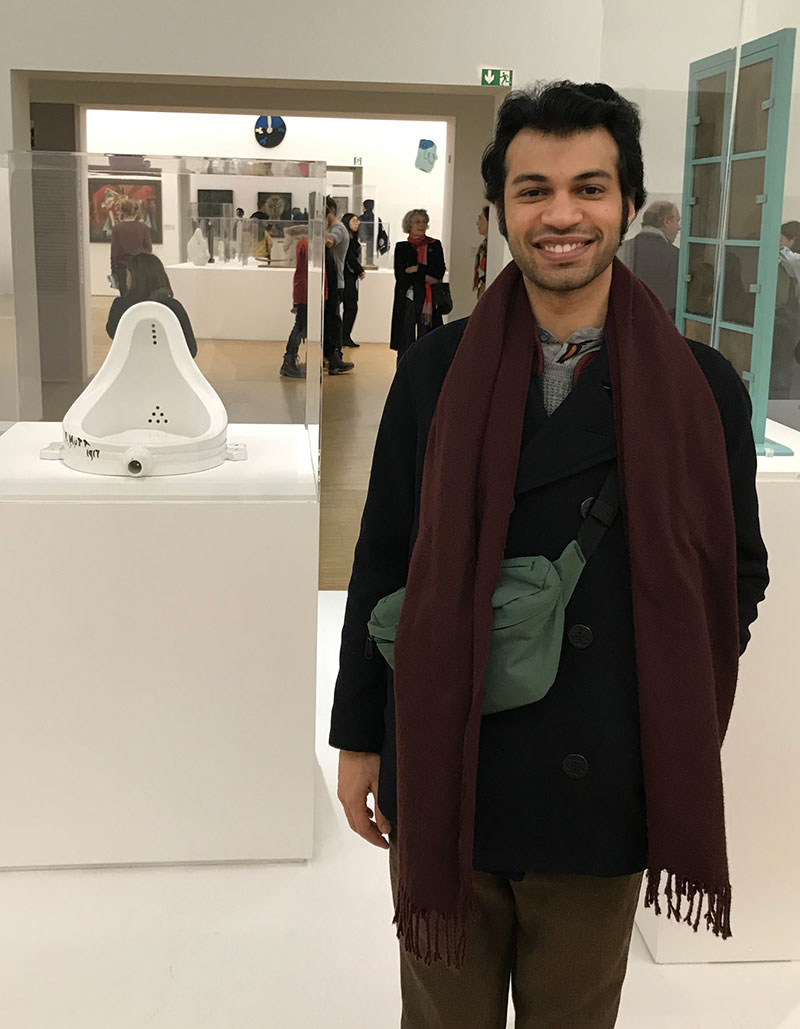


The Origin of Painting by Jean-Baptiste Regnault, 1785
Image courtesy of Wikimedia Commons
There is a story recounted by Pliny the Elder in his ancient encyclopedic undertaking – the ‘Naturalis Historia.’ It is of Parrhasius and Zeuxis, two Greek painters, and the contest held between them to determine the greater artist. First, Zeuxis unveiled his painting. It portrayed grapes with such startling realism that birds flew down from the sky to pick at them. Next was Parrhasius’ turn. Upon his opponent’s delay, Zeuxis, confident of his success, demanded that no time be wasted and that his painting be unveiled. However, quickly he realized his mistake. There was indeed nothing to be unveiled, for the curtain was itself the painting – it had indeed lay exposed the entire time. Apologetically, and with a great deal of candor, Zeuxis admitted that he had been surpassed. Whereas he had been able to only deceive the birds, Parrhasius had deceived even him, another artist.
“Enhancement (noun):
a change, or a process of change, that improves or increases value”[1]
On July 20th 2011, Apple Inc. released their latest in a line of operating systems – the Mac OS X Lion 10.7. On this first day of release, the OS sold over a million copies, going on to sell another five over the course of its impactful, yet short lived, existence on the market. Along with various additional features, and a built-in app store, it was Apple’s first operating system to feature a photograph with a recognizable subject as its default desktop background.
While early Apple operating systems used abstract renditions, mainly aqua-toned environments, and the last two had used images of intergalactic but largely virtual starscapes, OS X Lion featured a photographic image of the Andromeda Galaxy – a spiral galaxy 2.5 million light years away from the Earth.

Horizontally Flipped Andromeda Galaxy by Nihaal Faizal, 2014
Image courtesy of the artist
The Andromeda galaxy was first described as early as the year 964, when the Persian astronomer Abd al-Rahman al-Sufi called it a ‘nebulous smear.’ The first photograph of it was taken in 1887 by the amateur astronomer, Issac Roberts. Having been photographed numerous times since then, the wallpaper image of the Andromeda Galaxy came as no cosmic or scientific revelation. However, what was surprising was the representational quality of this image. Its colors seemed exceptionally bright – the deep blues of the night sky enveloped a pink spill of light – and the image seemed as if choreographed, with the stars spiraling in a dance towards the center.
Quickly after the release of this image, David Kaplan, an associate professor of physics at the University of Wisconsin-Milwaukee, spotted an inconsistency. Having studied different images of the Andromeda Galaxy for many years, he noticed that various stars and satellites had either been moved, or were entirely removed, while a distant galaxy that should have featured in the picture had completely vanished.
With no photographer having been credited for Apple’s image, it was quickly clear that the photograph was probably not as straightforward as it seemed. Most likely, it had been generated by a team of workers employed by the company, using software such as Adobe Photoshop. Websites and blogs that commented on this, often credited the astro-photographer Robert Gendler as having taken the original photograph that this ‘enhancement’ was based on.
“Luminosity (noun):
the intrinsic brightness of a celestial object, the state of appearing to shine”
On March 26th 2019, Huawei Technologies Co. launched the latest in their series of high-end Android smartphones – the P30 Pro. The primary selling point of this new product was the quality of its camera technology. Produced in collaboration with Leica,[2] it featured three lenses, one of which was a telephoto lens with an optical zoom of 5x and enabling a digital zoom of 50x. This camera system also featured a dual LED flash and a time of flight sensor to enable smoother motion captures.
Triumphant with this new technology, the product’s marketing campaign stated: “Zoom in to explore the mystery of the celestial night, watch an eagle hovering over trees or examine the delicate details of crystal. Capture the best things in the moment and create your vision for the future.”[3] It announced a new peak for smartphone photography.
This claim towards technical development was an important gesture for the company that, just a year ago, had overtaken Apple as the second largest producer of smartphones in the world, only to find itself wrapped in controversy. Huawei had been accused of embedding Chinese surveillance devices in their products – allegations that had significantly impacted their market sales, and also led to the company’s ban in the United States.
Emerging from the desire to reestablish the brand’s identity and position through innovative technology, an additional feature of the P30 Pro was its ‘Moon Mode’ – an A.I. program that helped take better photographs of the moon. Activated automatically when the camera was pointed at its celestial subject, ‘Moon Mode’ instantly enhanced the image, allowing for clear, zoomed in photographs of the moon.

The earliest surviving daguerreotype of the moon by John William Draper, 1840
Image courtesy of Wikimedia Commons
However, Chinese bloggers, notably those on ‘Android Authority,’ quickly noticed that something was amiss. Posts began to appear claiming that what ‘Moon Mode’ actually achieved was not a clear or zoomed in photograph, but instead a simulated one – an image put together from a multitude of others using an intelligent algorithm and an embedded database of similar images. The moon was described as having been “filled in,” of having details “picked out,” and of being “painted over.”[4]
Responding to this, Huawei denied these allegations in a public statement – as it had done for the ones surrounding the surveillance backdoors in their products – claiming that the camera merely recognized and optimized details within an image.
_____

Le Beau Monde by Rene Magritte, 1962
Image courtesy of WikiArt
From the time of Parrhasius to the present, curtains have featured widely across all forms of representational media. As an object that simultaneously reveals and hides, this preoccupation with curtains suggests a negotiation with the limits of representation and realism. In tiptoeing between light and shadow, illusion and evidence, and the real and its rendering, the curtain forever invites us to ask what lies behind it.
In one of its more recent manifestations, a popular product available online is the royalty-free stock video of digitally-rendered curtains. Behind the opening and closing of these modeled curtains lie blank spaces or empty screens – sites and sights waiting to be filled in by the purchasers of these videos. Rendered maintaining a high degree of photo-realism, these curtains sway to an imaginary wind, and move as they would in the physical world. Luminous and enhanced, bright and saturated, they perform as if on stage.[5]

Red Curtains Opening by Nihaal Faizal, 2014
Image courtesy of the artist
Like these staged curtains, Apple’s ‘Andromeda Galaxy’ and the various ‘Moon Mode’ photographs perform simultaneous acts of opening and closing, of revealing and hiding. As they rewrite the rules of photography – a demand echoed in the press release of the P30 Pro – they become images in which clear distinctions can no longer be made between states of production and post-production, the photographed and the constructed, or the finished and in-process.
In his book Shard Cinema, Evan Calder Williams talks of a new regime of images – those that “while referencing and standing in for the pictorial traditions, imaging styles, and representational strategies of conventional photography, are not as easily categorized as photographs.” [6] He speaks of these as being “less a distinct medium of aesthetic so much as a relation of images to the pathways, workflows, and contradictions they enact.”[7]
What these images reveal are no longer external entities – neither the galaxy nor the moon – but instead their own nature as images. What they hide is their failure to reproduce anything but ghostly copies of their referents. As the origin of the term index suggests, these images point towards, and so make visible, the facts of their own existence – the competing corporations that enable them, the process of manipulation and augmentation that enhance them, the global networks of their circulation, and the luminous screens that reveal them.
In pointing to these traces and movements these images challenge what Barthes once claimed. That “whatever it grants to vision and whatever its manner, a photograph is always invisible: it is not it that we see.”[8] Like in Parrhasius’ painting – one that makes visible nothing, if not the staging, the illusion, and the medium of painting itself – the photograph is increasingly all that we see; and through it the network of relations, the conditions of arrival, and the traces of dispersion that these images continue to enact.

Vorhang by Gerhard Richter, 1964
Image courtesy of the website of Gerhard Richter
__________
References
Sontag, ‘On Photography’Photos?’ from Cambridge Dictionary on a range of sources and techniques
Endnotes
[1] All dictionary definitions taken from online Cambridge Dictionary. https://dictionary.cambridge.org/
[2] Curiously, Leica was also the company that created the lenses for the Hasselblad cameras that were used by astronauts in the various Apollo moon missions.
[3] Huawei Press Release for P30 Pro. ‘Rewrite the Rules of Photography.’
https://consumer.huawei.com/en/phones/p30-pro/
[4] Photography Talk Blog. ‘Huawei Controversy: Is Their New Smartphone Actually Taking Incredible Moon Photos?’
www.photographytalk.com/huawei-moon-mode-might-be-fake
[5] It should perhaps be noted that some of the dictionary definitions of the term ‘curtain’ suggests that it is a material suspended so as to form a screen. In the case of these videos then, a screen inside a screen, hiding and uncovering yet another empty screen.
[6] Evan Calder Williams, ‘Shard Cinema’. Repeater Books, London, 2017.
[7] The author terms these images as ‘composite images.’
[8] Roland Barthes, ‘Camera Lucida’. Vintage Random House, London, 2000.
My warmest thanks to Anisha Baid, Chinar Shah, Rakhi Peswani, and Surabhi Vaya for their comments and suggestions towards this essay. A special mention to Thanik Jaganath for his unwavering observations of shifts in contemporary technology, and for sharing with me the story of ‘Moon Mode’.
Copyright © 2021, PhotoSouthAsia. All Rights Reserved.
Nihaal Faizal was invited to write this essay for PhotoSouthAsia by our Guest Editor, Chinar Shah. We encourage you to begin with Shah's introduction, Question of Photography, 2020, and to also read Shah's other invited essayists:
Aileen Blaney: Macro Your Shot
Anisha Baid: Screen as Image
 Copyright © Nihaal Faizal
Copyright © Nihaal Faizal
Nihaal Faizal is an artist based in Bangalore, India. His recent works have explored the semi-fictional history of Flubber, family memories around the Indian playback singer Mohammed Rafi, the international phenomenon of Taste of India restaurants, and drawings made by AI in science fiction films. In 2018, he founded Reliable Copy, a publishing house for works, projects, and writing by artists. Between 2013 and 2016, he ran G.159, a project space based out of his apartment in Yelahanka New Town, Bangalore.
20 November